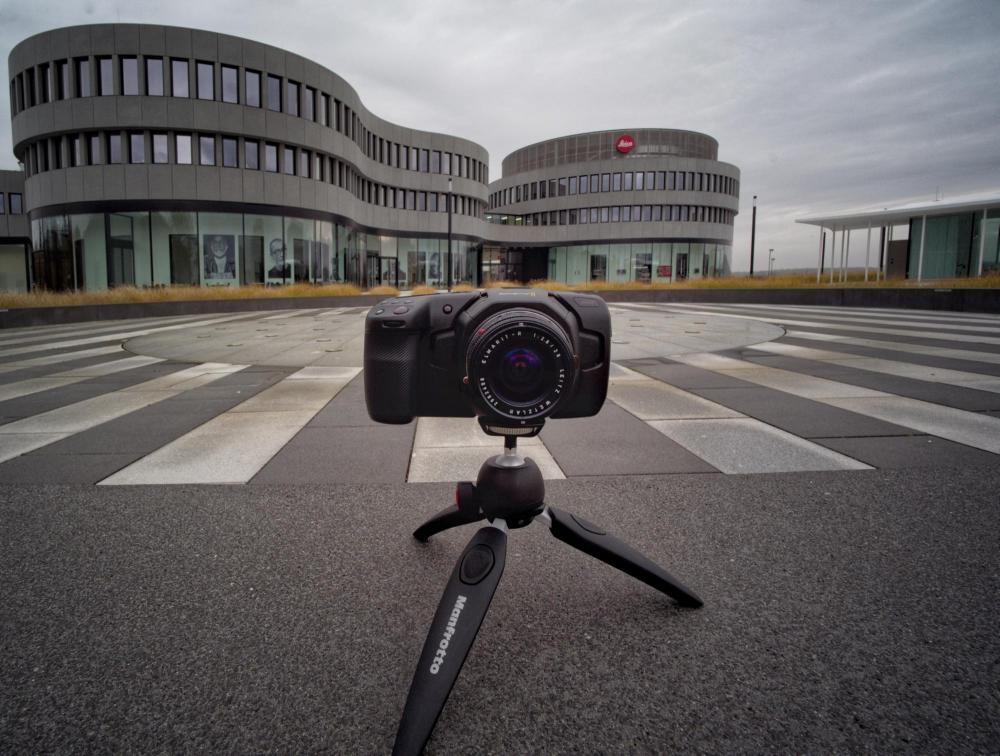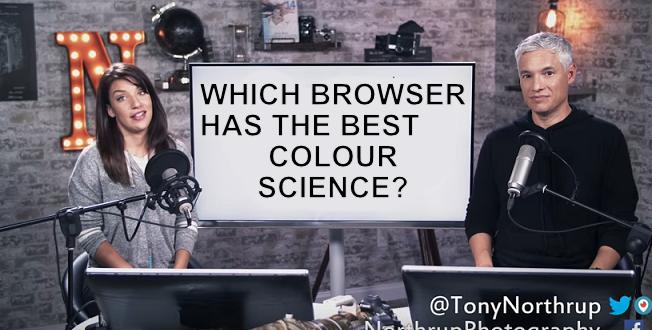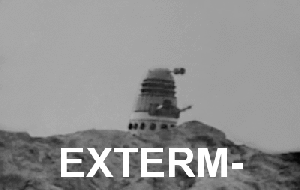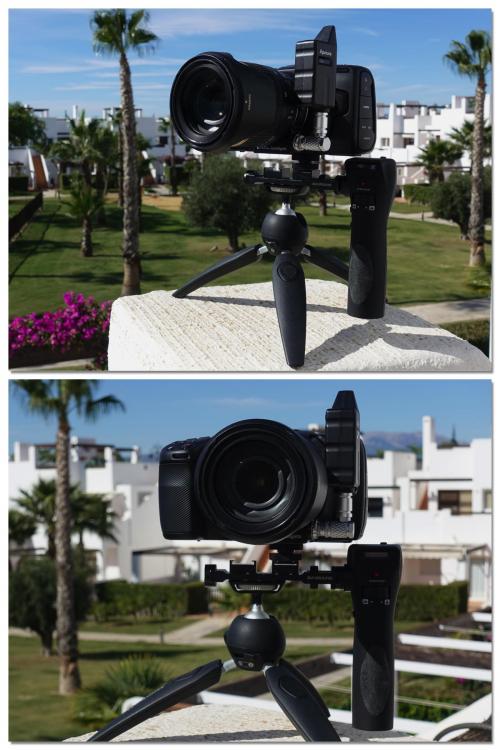-
Posts
6,081 -
Joined
-
Last visited
Content Type
Profiles
Forums
Articles
Everything posted by BTM_Pix
-
Unfortunately, its the inadvertent growing aspect of those batteries that has been causing the problem with them getting stuck in this camera.
-
With all due respect, I think it is a bit harsh referring to people as crying babies who are whining when they are actually raising legitmate concerns about powering this camera. Read my post above about the difference in heat generation between powering it on mains for 8 or 9 hour stretches versus powering it for 10 or 15 minutes on batteries. That difference in heat is not something to be unconcerned about and neither is the random battery life indicator. I have literally just had mine shut down on me mid take when it waa showing a quarter full. Yet, thus far, the only OFFICIAL way to power this camera other than the mains adapter is to use batteries. Everything else until they actually get that cable kit out is some form of cobbled together solution with dummy batteries and power packs. Yes,that situation will be resolved over time and won't be a concern for people who get this camera in the future but for people who actually DO have it right now, it is fair comment to be annoyed about the situation. The price of this camera doesn't always give it a pass regarding criticism as some of the criticisms have got absolutely nothing to do with the price of it or could have been avoided with such a minimal price increase that would have had zero impact on sales or anyone's satisfaction that they were getting more than their money's worth. Oh and @Jonesy Jones, my advice would be to favour any solution that powers it off the DC port. If they ever ship that cable kit
-
-
The footage from inside the car of someone driving through the fire to escape was proper apocalyptic stuff.
-
My camera bag is still drying out from my recent jaunt to Sevilla!
-
It gives you three cables with the 2 pin DC input on the end. (Dtap, DC Barrel and bare wire.) So you can power it from different battery solutions or even fabricate one yourself with the bare end. The 2 pin locking DC connectors themselves are between £10-15 each (and you have to hunt them down as while they are not proprietary to BM they are not a standard part in any electrical store) so the price is not too bad. As to why they are so rare, that is just a good old fashioned balls up as far as I'm concerned as they should have been available from day one. You'd have to think cables were the easy part of this particular project really so I don't understand it. It has also left BM open to a lot of heat literally and figuratively regarding running it on batteries. I have been working on the camera with it sat powered from the mains for hours on end (literally 8 and 9 hour days) and it produces barely any heat but within 10 minutes of then doing the same off the internal battery it is getting plenty warm. So for me this cable pack is not just about having ways to get longer run times any more but also about not running it on the internal battery unless absolutely necessary because the heat generation is a long term concern.
-
Got one on order with the same twelth of never delivery date. I'll try in Berlin on Monday if deliveries have started happening in Germany.
-
So, let me get this straight... A forum member (who contributes a lot to this place by the way) makes a cautionary post about having two separate failures of a camera model that many people on here may be looking to buy and the response is to criticise his work ? Are you trying to suggest he broke these cameras by virtue of taking photographs that you don't particularly like ? Have I got that right? That both of these cameras self destructed on the grounds of taste? Because if you are not suggesting that then you need to accept that your contribution to this particular thread is as irrelevant as it is mean spirited.
-
Smartphone review wars on YouTube make the ones between rival camera brand zealots look like light hearted banter at a pro-celebrity charity crown green bowls match in comparison.
-
Based on the that sequence, I suspect it might be counting down to offering you a refreshing Kia-Ora orange juice before the main feature presentation. Or advising you of a delicious Indian restaurant only 70 yards from this cinema.
-
-

EOS R does NOT lack sharpness in 4K - Here's proof
BTM_Pix replied to Andrew Reid's topic in Cameras
-
The difference between my one and the V2 (which after much confusion appears is the one they are selling off) is that the V2 can control the aperture and focus from the interface unit directly without having to use the controller. Do I believe its worth the hassle? I hate recommending things definitively but if you can find a focal reducer that offers electronic focus control of a Canon lens on a Blackmagic Pocket4K for anything less than this one then I'd probably buy it Unless you want to get involved in rail mounted focus systems there is just no other way currently that you can do focus control on an adapted Canon lens on the Pocket4K. Now that might well change in the future (if JVC can do AF on my metabones EF adapter then I see no reason why BM can't) but right now I can't see another way with any other adapter. I have no idea how much the import duty will be for you but if it doubles the price then it is still very good value for money. Put it this way, the Metabones Smart Adapter I've got that cost double that can only do aperture control with this camera. The bigger issue seems to be getting hold of one at all in Europe, so if you and @Anaconda_ really want one then the 2 options would be : 1) Get a friendly US forum member to order it and sent it on. I'm going to volunteer @webrunner5 for this or 2) Buy mine off me for €500 now that I've shilled the fuck out of it !
-
Well...its a strange thing with that particular lens. The LensRegain is only 1 stop but it reports it as f1.8 and my metabones reports it as f1.9 so its all a bit odd. Anyway, budget for 1 stop and you won't be disappointed ! Its great value at that price for the Pocket4K because - and again if someone knows different please chime in - the fact that there is nothing other than aperture control from smart adapters for it means that its the only way you are going to get focus control of Canon lenses on it without resorting to a follow focus system and all that that entails rig wise. Would I recommend it at the original price? Possibly not but if you can get one at the current price then its certainly a bargain. I think someone further up the thread said if they used PayPal as a checkout option it worked?
-
The meter is random at best and ironically its at its worst when used with the battery supplied as it uses blocks to illustrate the power level rather than the percentage with other batteries. One interesting thing though is that I've had mine sat on a tabletop tripod powered on for about 4 hours off the mains now while I've been performing 'certain operations ' on it and it is pretty much stone cold. Even the fan is only putting out just enough hot air to warm the hands of an Action Man. The tight tolerance in the battery compartment is obviously not doing the camera any favours here and its causing a bit of a loop in that the cheap batteries are more prone to slight swelling when hot but the camera itself is more prone to causing that swelling by how much heat it is generating and not venting in there. Very interested to hear how you get on with your Powerbase battery. I've said it before but BM really need to pull their finger out delivering the cable kit to offer some different power options.
-
The problem with IBIS is that there is a lot going on under the hood with a lot of cameras regarding lens corrections that can often end up interacting in a negative way when you add the additional corrections from IBIS so its by no means a magic bullet and is dependent on the camera and lens combo on an individual basis. What I would like to see is manufacturer's doing an integral SteadXP type of option where instead of making the corrections in real time (which are permanent and destructive) the camera instead writes the parameters for the corrections it would have made within the video file. That way they could then have a plug in where you could fine tune the correction in post. With regard to the Tamron, like every other adapted lens with the Pocket4K, it offers no AF whatsoever from the camera. *** So, in this case, all of the focus control of it is driven from the LensRegain handle. It actually more practical this way anyway as it means you can do focus control whilst its recording without disturbing the camera as even with the lightest touch you are going to cause a vibration using the touch screen to do it. Plus, of course, you get the advantage of being able to use the A/B memories on the grip to do pulls to with the transition speed being constantly variable on the controller as you are doing them. It also means that when you swap lenses you don't have to mess about re-aligning the focus gears and recalibrating the lens as you do with a servo based system, plus of course you don't have to have a rail system to mount it on. If you then got a gimbal, you could of course just mount the controller to the base of that or an accessory bar and still use it. With regard to the IS on the Tamron, its perfectly adequate for its focal length and combined with the controller grip mounted as I have it for support its actually a pretty neat system. At the price they were flogging the LensRegain off for (and still are in the US) and how cheap that lens is used, the whole thing amounts to an f1.8 24-70mm equivalent stabilised lens with electronic follow focus for less than £300. More than enough money left over for a decent tripod *** If anyone has an EF adapter that DOES work for AF with the Pocket4K then I'm all ears.
-
I think its a bit of a double whammy in that gimbal options for the Pocket4K (as you can see from this thread and the separate one) are a bit sketchy at the moment as is the lack of IS on a lot of the lenses people are using. The Sigma 18-35mm has become pretty much the de-facto "standard" lens over the past few years and whilst it's lack of IS didn't really matter that much as the camera it was mounted to had IBIS and/or was on a gimbal, it really does matter when neither of those avenues are available. That's why I think people might want to consider options like that cheap Tamron and the like if they are going to be shooting handheld as, pragmatically speaking, the IS arguably matters more in that context than the pure optical performance advantage of something like the 18-35mm that doesn't have it.
-
Can't believe you've all forgotten about my prototype electronic variable ND from the summer. If I'd known you were all prepared to pay $1200 for one I probably would have prioritised it a bit more! Shall we say $800 and pretend that cardboard and electrical tape are the new carbon fibre? Joking aside, its not some massive undertaking for a company to make one as the technology is readily available and fairly cheap.
-
No, it is of the original version, which I have had for a long time. Such a long time in fact that it looks like it might be a Version 0 as it definitely doesn't have the adjustment capability from interface unit but..... The site that it is listed on as V2 and for €682 was this European one here https://aputureshop.eu/dec-lensregain.html However.....looking closer at that site, although its branding makes it look like the official Aputure online store, I suspect its actually a distributor rather than Aputure themselves and that that listing is quite old. On the official Aputure European store here, it is indeed still showing out of stock https://eu.aputure.com/collections/follow-focus That other site has muddied the waters calling it V2 and listing it as a 'new' product when in actual fact it has been that way for quite a while (unbeknown to me with my original one !). As I said in the post, it does seem to still be available in the US store and if they ship outside of the US then it would certainly be worth the import duty and shipping to the EU. The $249 price is for the vari ND version by the way (which doesn't have focal reduction), the focal reducer version that I am referring to is listed as $149.
-
Cut a strip of gaffer tape slightly wider than the battery and affix it at each end so that it has a bridge in the middle that you can put something in (small screwdriver or tweezers for example) then press the tape down around it. You should then be able to pull on the screwdriver/tweezers to pull it out. Another alternative is to use double sided velcro but you have to make sure that it is firmly glued on. The velcro option would allow you to keep on using the battery in the Pocket4K and be able to always be able to get it out again. Though I doubt you want to put it anywhere near the camera again after that experience !
-
The mystery of why Aputure were selling the Lens Regain products off cheap looks to have been solved as they have now released a Version 2 model. From what I can see, the only difference is you can control it from the interface unit as well as the grip and it is now back up to €682 I guess this means that the original won't be coming back in stock in the EU store but its still available in the US store if you want to grab one. As an FYI for anyone looking to shoot handheld with the Pocket 4K who can get hold of a Lens Regain, I have used a cheap DJI Osmo cold shoe adapter bar to mount the Aputure control grip to the camera. (Ignore the small tripod in the shot obviously as it was just used to stand it up for the picture) It makes it a very nice stable little setup and makes holding it at the distance you need to because of the screen far more comfortable. Ergonomically, it works very well too having all the lens control (including the focus memories) in your left hand and the camera control in your right. It is a good halfway house, for me at least, of having more stability and control without having to start rigging it with rails and a follow focus. Incidentally, the lens that is on it is a Tamron 17-50 f2.8, a very underrated and quite lightweight lens which I've had for years and you can pick up used for about £150. On the Lens Regain it becomes f1.8 with more or less a FF equivalent FOV of 24-70mm so it is ideal as general purpose lens anyway but the icing, of course, is the image stabilisation which makes this whole rig really effective for handheld shooting. The only downside is that it isn't exactly silent when it is being focused...
-
The Ronin S controls focus on the other cameras using the MTP protocol over USB, so that won't be an option with the Pocket4K. BM's own camera control protocol runs over SDI and latterly Bluetooth LE. The former isn't an option for the Pocket4K but the latter is. The Ronin S does have Bluetooth LE (to talk to its app) so that would be a viable way to do it but BM's remote focus control isn't particularly elaborate (just near and far in 1 step increments) so even if DJI implement it then I'm not sure how well it will translate to that wheel.
-
From me ? I haven't really spent enough time with it to say anything even remotely definitive about it. What I will say from a positive perspective is that I really like the menu system, I think they've made really good choices with the physical controls and them including false colour (especially when you have it switchable on the function key) offsets the uncertainty one might have about setting accurate exposure on a less than ideal screen and without an EVF. It is not without its quirks though but I'll need to test it a lot more to understand their impact or whether some of them are just me being stupid
-
It does do the same but the mitigation there is that it has a thumbnail substitution system to let you know there is a clip there but that it won't play it either because its corrupt (which it shows as a question mark) or that you need to switch formats (the landscape in a film strip icon). That would solve the problem for BM too rather than hiding the clip entirely, which is very disconcerting even when you've had a camera with a similar playback situation like the LS300 let alone anyone coming from a hybrid With the LS300, I use the A slot SD card for 4K and the B slot one for HD which also helps to sharpen my addled mind and I'm going to replicate that approach with the Pocket4K and use the SD card for 120fps. With the LS300 of course, the reboot between changing formats also helps reinforce it whereas the instant change when doing the same with the Pocket4K lulled me into a false sense of security ! Ideally, BM will offer an option to automatically change format on playback with it then reverting back to the mode it was in when you exit but LS300 style thumbnails would suffice for now.









